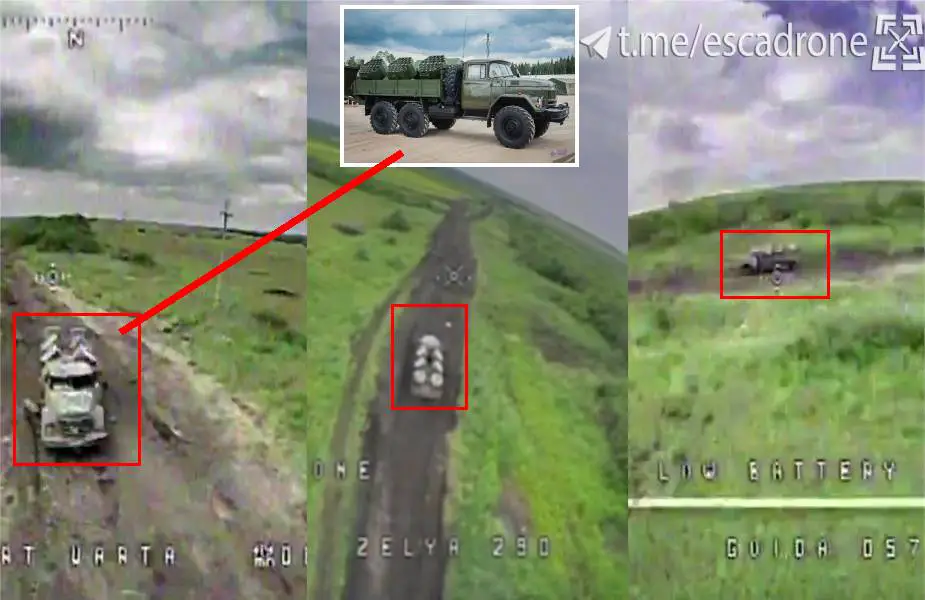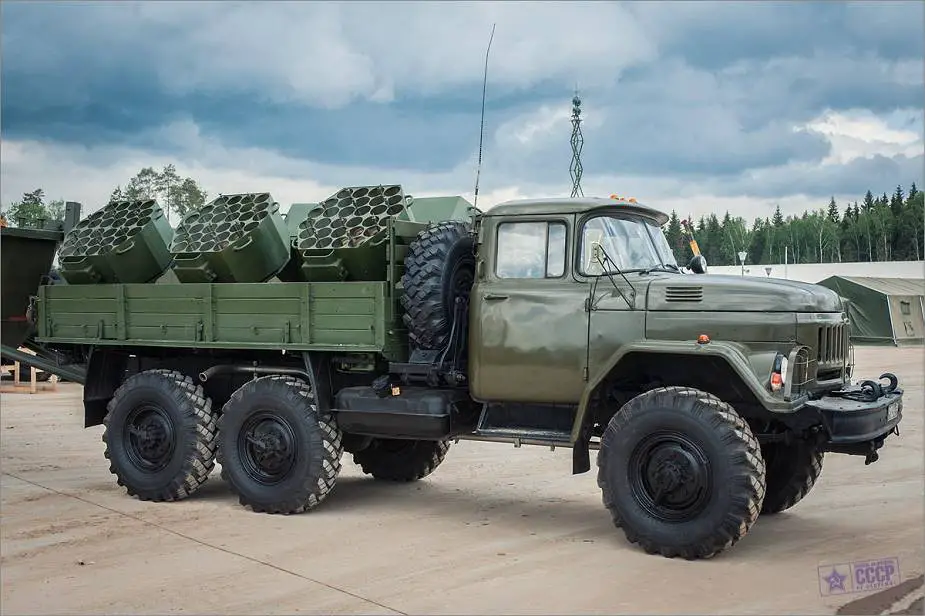- Army
- Conflicts in the world
- Israel - Iran conflict 2025
- Pakistan - India Conflict 2025
- Russia Ukraine War 2022
- Libya conflict day by day
- HAMAS - Israel War 2023
- Operation Serval in Mali French Army
- Sangaris operation Central African Republic
- Sangaris opération militaire République Centreafrique
- Ukraine - Russia conflict
- Syria conflict news
- Defence & Security Industry Technology
- Armies in the world
- Analysis Defense and Security Industry
- Conflicts in the world
- Navy
- Air
Ukrainian soldiers use VTL armed drone to destroy first Russian UMZ mine-laying vehicle
A video published on the Social Network Telegram on June 16, 2023, reveals the moment where Ukrainian soldiers successfully utilized FPV (First Person View) loitering munition to destroy the first Russian UMZ Zil-131 mine laying system. This system is a Russian army engineering combat vehicle of particular rarity.
Follow Army Recognition on Google News at this link

Ukrainian soldiers have used armed drone to destroy the first Russian army UMZ Zil-131 mine laying system. (Picture source Video footage Telegram)
In the ongoing conflict between Russia and Ukraine, Ukrainian forces have ingeniously repurposed commercial drones into FPV (First Person View) loitering munitions, equipped with small explosives, that allow operators direct reconnaissance during the strike mission. This technology witnessed significant development during the years 2022-23 amidst the Russian invasion of Ukraine. Examples of these low-cost drones include the Escadrone Pegasus and the Vyriy Drone Molfar.
Escadrone, a non-profit group, emerged in Ukraine in 2022 with the goal of fabricating FPV attack drones, a form of FPV loitering munition. Their business model revolved around the mass production of inexpensive drones designed to carry anti-tank grenades to armored military vehicles.
Russian forces stationed in Ukraine extensively use the UMZ mine-laying system to counteract Ukrainian forces and disrupt Western tanks and IFV (Infantry Fighting Vehicles) donated to Ukraine.
The UMZ is a remotely operated mining launching system that is designed to install various types of anti-tank, anti-personnel, and mixed minefields. Mines are deployed only on the surface of the ground.
The UMZ system, based on the military truck Zil-131, comes with six mine launcher pods at the rear, each capable of launching up to 30 mines. This system can deploy AT (Anti-Tank) or AP (Anti-Personnel) mines between 30 to 60 meters from the vehicle while moving at speeds ranging from 10 to 40 km/h. The reloading process takes 1 to 2 hours for a crew of two men. A single UMZ can establish a minefield, spanning from 150 to 1,500 meters in length, depending on the type of mine used.
The base vehicle, Zil-131, is a multipurpose 3.5 tons 6x6 army truck, designed in the Soviet Union and produced from 1966 to 1994. Over the years, the Russian armed forces have modified it for various purposes, including mine laying.
The Zil-131 has a sturdy 6x6 drive chassis, providing it with robust off-road capabilities. It's powered by a Zil-130 V8 gasoline engine that generates around 150 horsepower, coupled with a five-speed manual transmission. This setup enables the Zil-131 to reach a maximum speed of approximately 80 kilometers per hour on roads.
The truck's cabin can comfortably house a driver and two passengers. The cargo area behind the cab can carry up to 3.5 tons of load, making it versatile enough for a wide array of applications. It can transport troops, carry heavy equipment, and be modified for specialized roles.
The Zil-131 also comes equipped with a central tire inflation system, allowing the driver to adapt to different types of terrain while in motion. Coupled with its high ground clearance and 6x6 drive, the Zil-131 exhibits exceptional all-terrain performance.

The UMZ is a mine laying system based on a Zil-131 truck able to launch Anti-tank and anti-personnel mines.


























